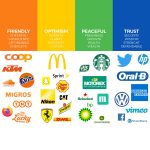In the beginning the website was ...
... then many things, like security, SSL, form data, credit card data, search engine ranking and much more.
Security has been an important topic on the internet for quite some time. Companies like Facebook and Google are aware of their responsibility and invest heavily in a "secure" Internet. Now it is not enough to make only the big websites safer, but also the small ones. These are often on many other websites on the same servers and send important customer information back and forth, which can be easily intercepted.
For this reason, Google, Mozilla (Firefox) and others are beginning to better inform consumers about insecure websites. This sensitization will be carried out in different steps this year.
SSL alerts today
The first step has already been done. The browser displays a "!" - character in the browser line on insecure websites. The next step is to actively indicate that this site is not safe. It is purposefully concealed, which is exactly on the website not sure.

SSL alerts tomorrow
The final step of this awareness-raising process will then be to lower actively "insecure" websites and warn the visitor with a red signal color. This is expected to happen later this year.

Only in this way one promises to be able to exert enough pressure on the website operators to encrypt their websites as well, namely the communication between the web server (where the website was installed) and the customer's browser. So that nobody in the Internet cafe or at the hotel bar can read what the neighbor is currently typing in his browser. It does not matter whether it is the browser of the PC or the mobile phone.
What to do? Act now!
In the past, you had to pay a lot of license money to keep an SSL security certificate on your own web server. Meanwhile, you get simple SSL security certificates for free. Google, Facebook, CISCO and Co. now finance these certification bodies directly. However, this is just the SSL certificate that encrypts the communication. In fact, the site must completely access the new encrypted SSL links «https: // »be converted. That means a lot of effort for many website owners. Only when all links of a website to the new "https: //»The browser will no longer display a warning message and rank Google as visually« secure »and therefore« more valuable »in the ranking.
How do I change my website to SSL?
- Applying for an SSL certificate from a certification authority.
- Install the SSL certificate on the Web server.
- Switching the website application to SSL.
- Adapt all internal links of the website to the new SSL links (this can easily be several thousand).
- Adapt all graphical interfaces to the new SSL links.
- Check and, if necessary, rebuild old website modules that do not yet support the new SSL links.
- Inform Google about the new links so that Google also reviews and indexes the new site structure.
- Analyze which sources visitors use to reach the page and customize or at least redirect the old non-SSL links.
Who will do that to me?
We, the Cloud Connection St. Moritz!
Seriously, it will not be long and your visitors will wonder if they still want to stay on your "insecure" website. We clearly support the strategy of making the Internet "safer". This will help you to make the customer experience on your website as enjoyable as possible and to improve your website conversion goal.
Of course, we do not just leave it up to safety, because if we put the website through its paces before we change it, then we can implement any improvements, speed optimizations or other customer requests.
Do not make your customer feel insecure on your website!





